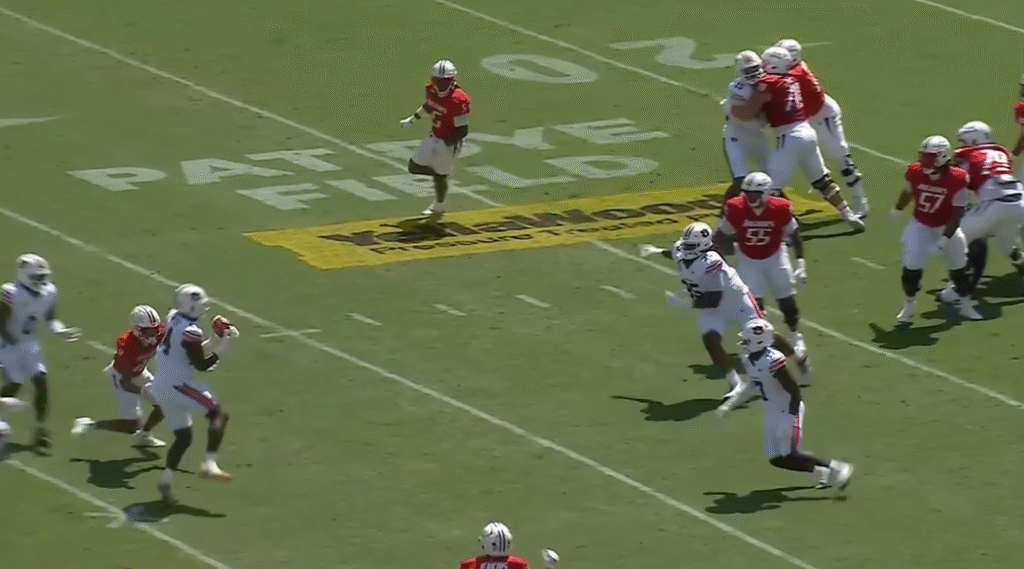Georgia Tech’s incredible 222-0 victory over Cumberland University in 1916 is still the highest scoring college football game; the score is so high that it almost seems more like a basketball score than a football one. That day, renowned coach John Heisman put on a show that was controversial in its execution but remarkably effective in making a point. In order to avoid a contractual penalty, Cumberland, which had canceled its football program the previous year, put together a team of law students and fraternity brothers. What transpired next was more of a spectacle than a competition, but it marked a significant turning point in collegiate athletics.
Heisman’s goals extended beyond simple rivalry. Heisman never forgot the humiliation Cumberland had caused Georgia Tech in baseball earlier that year by using players who were ineligible. On the field, his reaction was very obvious: he let loose his team mercilessly. The score was 126–0 at the half, and even though the last two quarters were cut short, the total rose to an all-time high of 222. This record, which has been remarkably resilient for over a century, has not been approached by any team in the modern era.
The outcome is criticized for undermining sportsmanship, but supporters see it as a reflection of a time when the rules were less rigid and rivalries were noticeably more intense. There are now many different ways that people remember the game: sometimes as a lesson in fairness, and other times as trivia that highlights how unpredictable sports can be. It also emphasizes the importance of preparation for players, and for fans, it represents an interest in the extremes of competition.
Highest Scoring College Football Game – Key Details
| Category | Information |
|---|---|
| Historic Game | Georgia Tech vs. Cumberland University |
| Date | October 7, 1916 |
| Final Score | Georgia Tech 222 – Cumberland 0 |
| Location | Grant Field, Atlanta, Georgia |
| Georgia Tech Coach | John Heisman (namesake of the Heisman Trophy) |
| Cumberland Program Status | Football program disbanded in 1915, forced to field a makeshift team in 1916 |
| Records Set | Most points scored in a single game; most lopsided victory in football history |
| Context | Game played under threat of contract penalty; Cumberland used law students and fraternity brothers as players |
| Modern Comparison | Highest-scoring modern game: Texas A&M 74 – LSU 72 (2018, 7 OTs) |
| Reference | ESPN – Highest Scoring Games |

Modern high-scoring games, on the other hand, exhibit genuine competitive balance as opposed to intentional imbalance. The 2018 Texas A&M–LSU game, which ended 74–72 after seven exhausting overtimes, was a strikingly successful illustration of both teams’ tenacity. The game, which lasted almost five hours, demonstrated the offensive explosion of modern college football. Similar to this, SMU’s 2022 victory over Houston, which ended in a score of 77–63, packed 140 points into regulation, demonstrating how creative offenses and rule modifications can produce fireworks without the brutality of a mismatch.
Other unbeatable sports records, such as Wilt Chamberlain’s 100-point NBA game or Joe DiMaggio’s 56-game hitting streak, are culturally associated with the Cumberland blowout. Every number is inscribed in history, but Georgia Tech’s stands out because it was motivated by vengeance rather than just athletic prowess. The story has a very distinct emotional weight because of this duality: admiration for its boldness and uneasiness at its execution.
The game’s significance in society outside of sports is what makes it so intriguing. It serves as an example of how extremes draw attention. Sports frequently commemorate the unusual, much like Hollywood thrives on spectacular spectacles and politics thrives on sharp fluctuations in polling. The 1916 game demonstrates how excess itself can occasionally become the legacy. When modern games go into overtime, broadcasters bring it up, fans make jokes about it online, and even celebrities comment on it. Lifelong sports fan Bill Murray once said that some records, such as Georgia Tech’s 222, are so unbreakable they are practically legendary, solidifying their status in legends.
It’s also important to note how much better sportsmanship has become since then. Embarrassment was considered a normal part of rivalry a century ago. These days, running clocks and mercy rules are especially helpful in safeguarding overmatched teams. The change is a reflection of society’s overall progress toward empathy and justice. Fans who support explosive offenses also expect athletes to treat opponents with respect, which is a significant improvement and a very effective way to maintain the honor of competition.
The temptation to score too many points is still very strong, though. Because offensive fireworks are entertaining, college football thrives on them. 70-point explosions or seven-overtime shootouts are popular with both fans and networks, generating income and attention. This is how the legacy of 1916 and the media-driven spectacle of today are indirectly related: both demonstrate that, despite the drastically changed context, fans still enjoy the drama of points.
